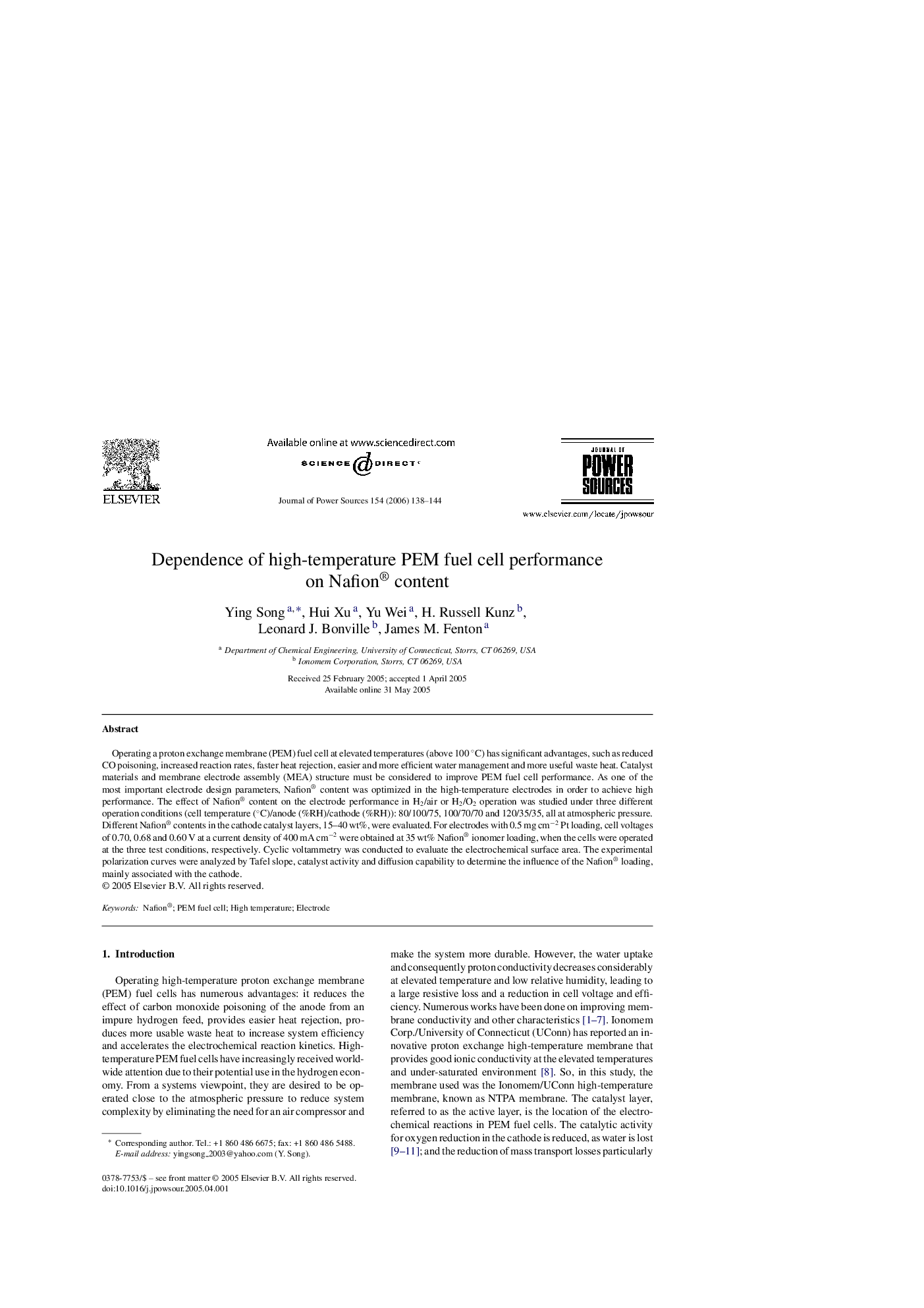| Article ID | Journal | Published Year | Pages | File Type |
|---|---|---|---|---|
| 1295112 | Journal of Power Sources | 2006 | 7 Pages |
Operating a proton exchange membrane (PEM) fuel cell at elevated temperatures (above 100 °C) has significant advantages, such as reduced CO poisoning, increased reaction rates, faster heat rejection, easier and more efficient water management and more useful waste heat. Catalyst materials and membrane electrode assembly (MEA) structure must be considered to improve PEM fuel cell performance. As one of the most important electrode design parameters, Nafion® content was optimized in the high-temperature electrodes in order to achieve high performance. The effect of Nafion® content on the electrode performance in H2/air or H2/O2 operation was studied under three different operation conditions (cell temperature (°C)/anode (%RH)/cathode (%RH)): 80/100/75, 100/70/70 and 120/35/35, all at atmospheric pressure. Different Nafion® contents in the cathode catalyst layers, 15–40 wt%, were evaluated. For electrodes with 0.5 mg cm−2 Pt loading, cell voltages of 0.70, 0.68 and 0.60 V at a current density of 400 mA cm−2 were obtained at 35 wt% Nafion® ionomer loading, when the cells were operated at the three test conditions, respectively. Cyclic voltammetry was conducted to evaluate the electrochemical surface area. The experimental polarization curves were analyzed by Tafel slope, catalyst activity and diffusion capability to determine the influence of the Nafion® loading, mainly associated with the cathode.
